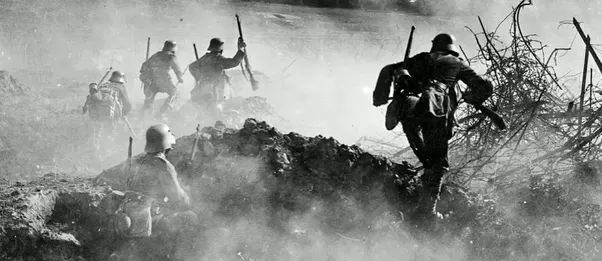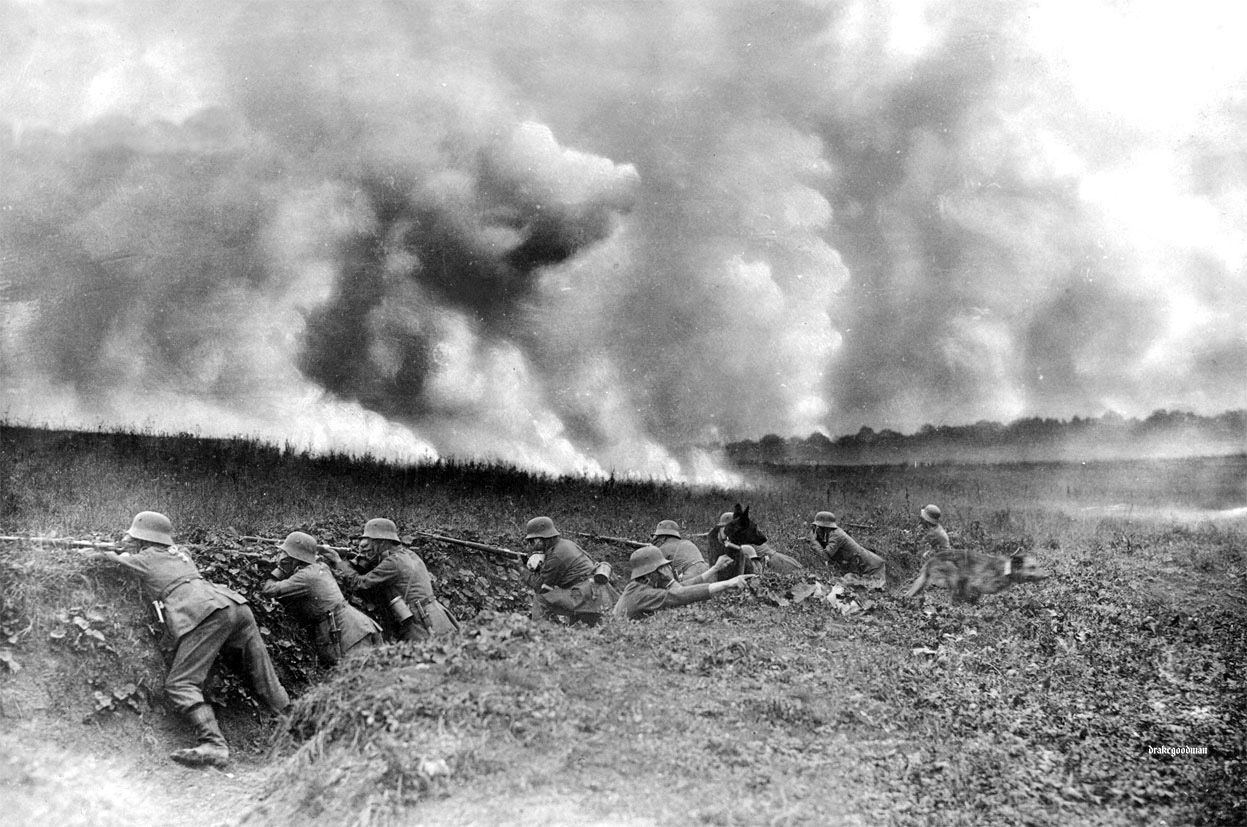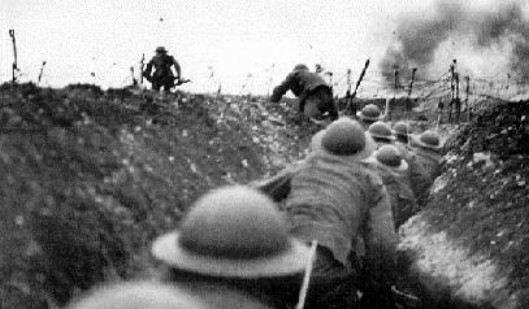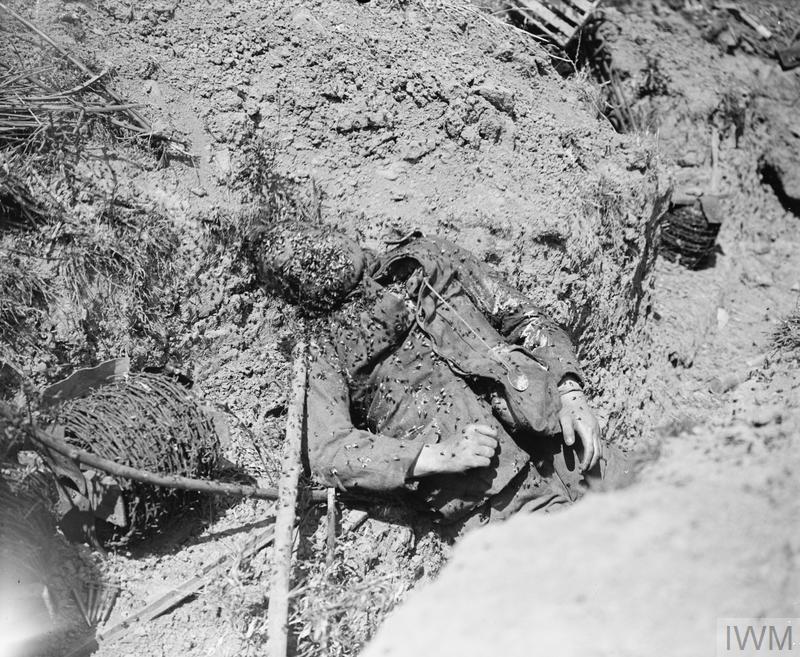Allies Near Collapse, Then Turn the Tide.
Foch: ‘We Cannot Surrender One Inch.’
Special to The Great War Project.
(26 March) For a week a century ago, the situation is dire for the British forces facing the onslaught of the German spring offensive, codenamed Operation Michael.
“On March 25th,” reports historian Martin Gilbert, “the Germans broke through between the British and French armies. As many as 45,000 British and French soldiers now taken prisoner.”

German soldiers advance in a gas attack, spring offensive, 1918.
“As the British line east of Amiens [in northern France] was threatened with collapse, a special force of 3,000 men was formed to hold the line. It included five hundred United States railway engineers, thrown into the struggle at its most dangerous moment.”
The Germans succeed in pushing back the French and British lines at several points.
At this moment a century ago, it seems as though the Allies cannot hold the line anywhere.
One British general is removed from his command. Writes historian Gilbert of the bad news, “The public was satisfied at the thought of an incompetent general and poor troops being the cause of so deep a retreat.”
But at this moment, unexpectedly, the British offer a ferocious response. After that terrible two weeks, the British front still holds “and the German last thrust had patently failed.”

German gas attack in 1918 spring offensive.
On March 30th, reports Gilbert, “a successful counterattack by British, Australian, and Canadian troops in which much French territory was recaptured and signified the turn of the tide for the Allies.”
“The Germans were only eleven miles east of Amiens, but the city eluded them.”
The Germans seized much French territory, and took 90,000 prisoners and 1,300 guns, but nevertheless, reports Gilbert, “the German attack was broken, and their own losses were high.”
It became clear to the command on both sides that “a German victory on the Western Front would be the end for the Allies. So how did the British stop the German offensive?
“The last man may count,” was the way British Prime Minister David Lloyd George put it.”

British soldiers attack in 1918 spring offensive.
The aim, declared the French senior commander Marshall Foch, “we must fight where we are now. We must not surrender a single inch.”
Foch gets command of all French and British forces. Writes war historian John Keegan, “his appointment came just in time.” The Germans still press ahead, gaining fifty miles and coming within five miles of Amiens.”
“But,” observes Keegan, “the appointment of a single supreme commander with absolute authority to allot reserves, French and British alike, wherever they were most needed, was essential in such a crisis.”
At this stage the Germans are in crisis as well. “Not only had the pace of their advance slowed,” writes Keegan, “the advance itself had taken the wrong direction.”
“In France, doctors and nurses were ensuring that 60,000 men and women were returning to the battlefield each month to rejoin the fight.”
And from Britain “more than 100,000 infantry replacements reached France in two weeks, many of them eighteen and nineteen-year-olds who had not seen action before.”

The dead in the German spring offensive, 1918.
As for troops from the United States, the pressure was on them, but they still lagged in reaching the frontlines.
The Germans do not lag. In April, they move some 80,000 troops into the Western sector.
The outcome of the German spring offensive remains in doubt.
